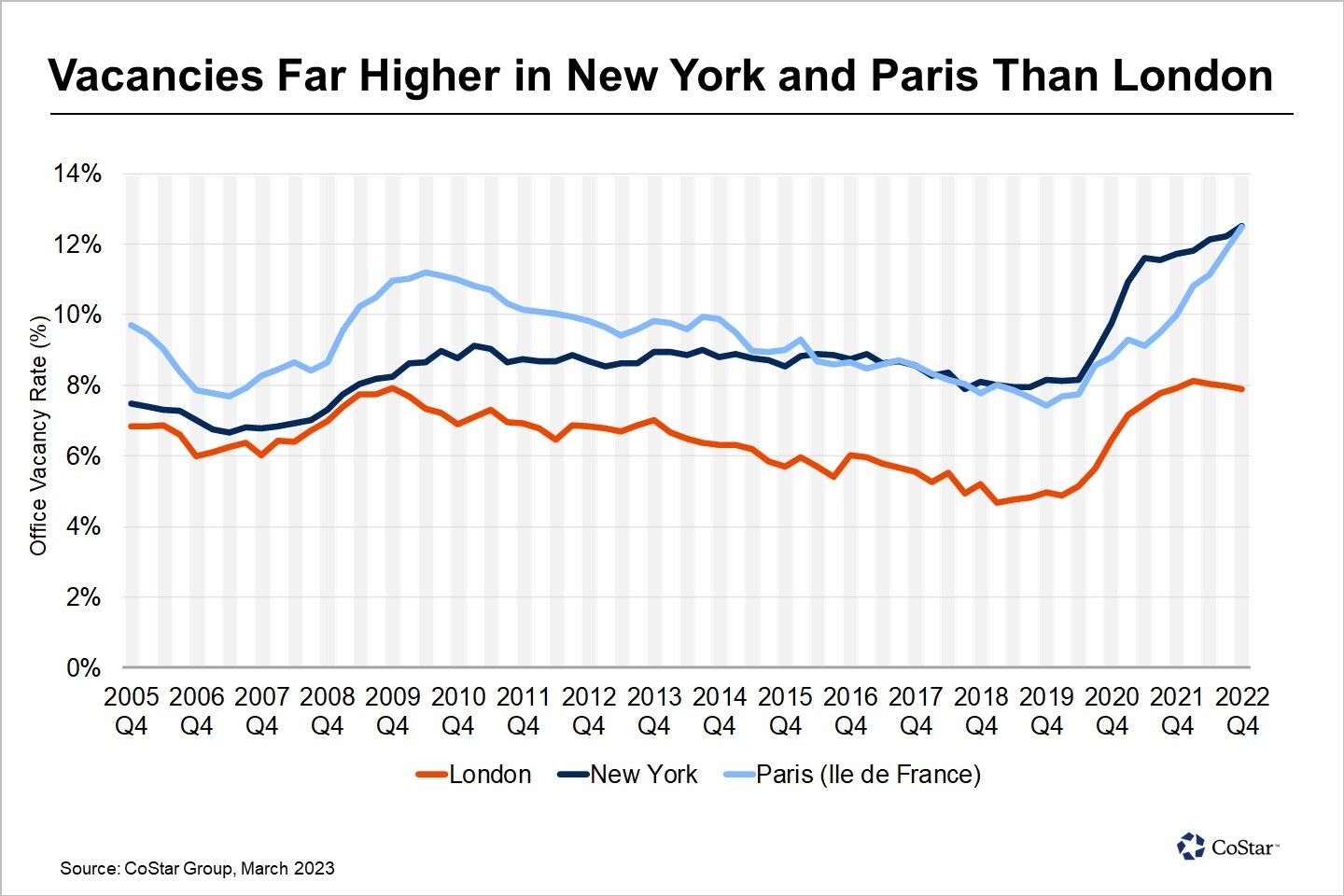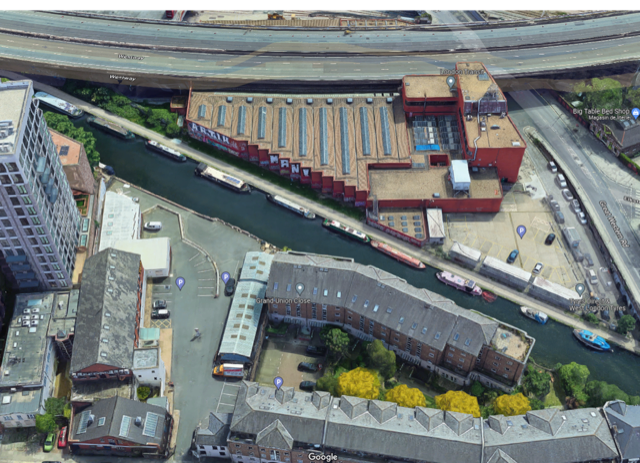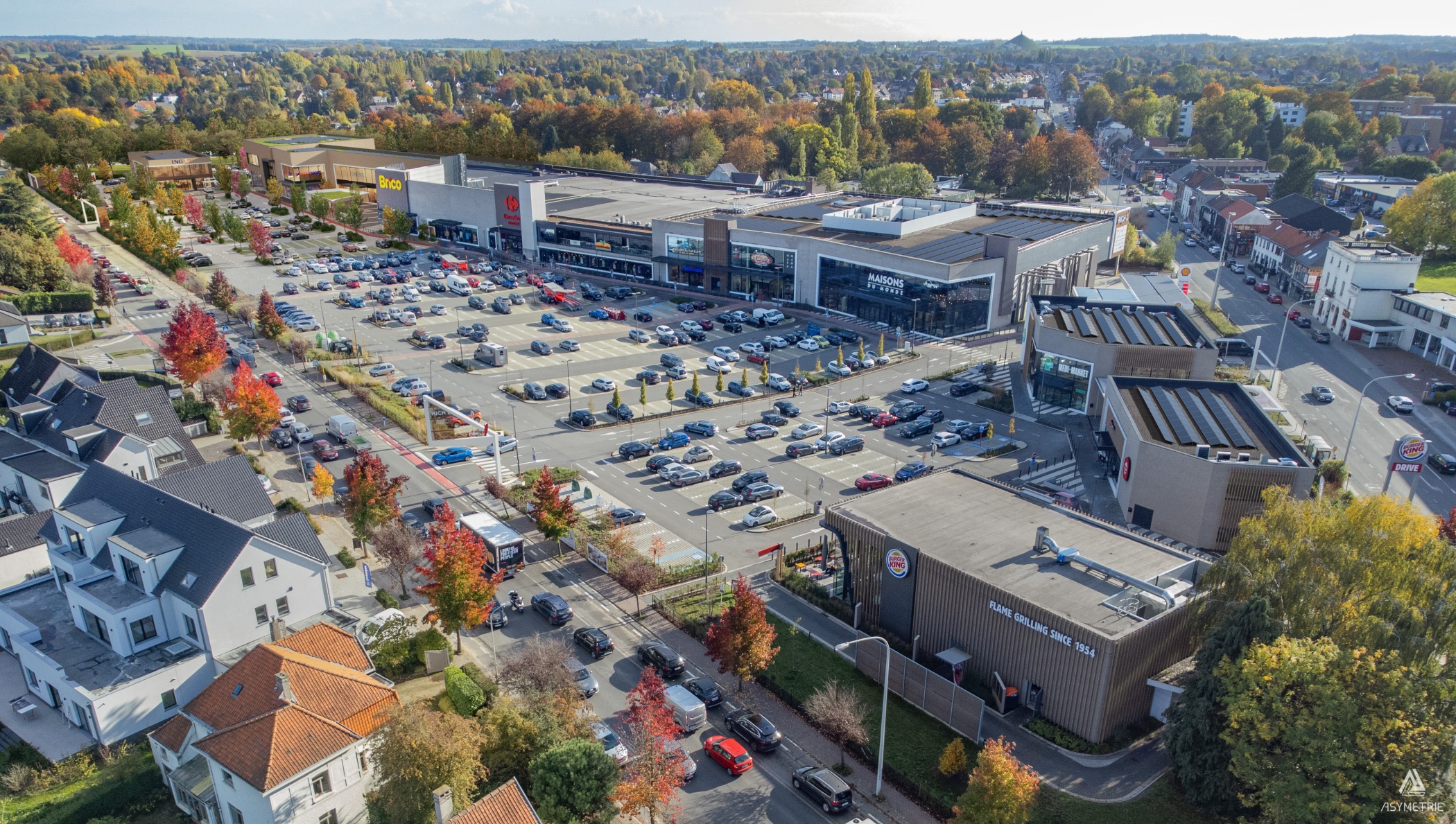Along Cannes’ iconic La Croisette boulevard, an army of colourful booths attract the eye as large, bold letters notify onlookers of the various UK regions out in force to showcase major investment opportunities in their cities.
This year, 23,000 people have descended on southern France to attend Mipim, with regional representatives setting up camp in each corner of the sprawling site to discus major schemes and their approaches to major town centre regenerations.
CoStar looks at some of the biggest regional UK investment opportunities exhibited at Mipim and talks to those fronting the schemes who explain their aspirations for developments in the area and appetite for invest amid economic headwinds.
Belfast
One booth that is hard to ignore this year is Belfast’s bright yellow stand, which looks east across the Bay. Like the French city, Northern Ireland’s capital city shares a close connection to the sea, which feeds into one of its biggest development opportunities, the Titanic Quarter.
Over 100 years after the doomed RMS Titanic sailed out of Belfast Lough, the area is now one of Europe’s largest urban waterfront regeneration projects, comprising 185 acres of brownfield site housing a number of existing buildings that have been earmarked for re-use or redevelopment.
A Planning Development Framework, which lays out the spatial planning of the area, has already been approved to regenerate Titanic Quarter, providing multiple investment opportunities for the site owned by Titanic Quarter Limited and Belfast Harbour. The size of the project is significant, with potential development phases over the next twelve years totalling £1.4 billion.
The scheme comprises a mix of residential, commercial, educational and leisure projects for future development. But Titanic Quarter has already attracted international companies. Amazon has a 90,000-square-foot purpose-built distribution and warehouse space in the area, while Citi and Microsoft are also present.
Belfast City Council chief executive John Walsh says the popularity of the city among financial and technology firms is strong, noting a growing demand for accommodation that will be needed to continue the regeneration of the area.

“Belfast has experienced exponential growth in the tech sector, particularly fintech with the likes of Citi, Amazon and Microsoft all in the city,” he says. “[Those businesses] who have come to Belfast create thousands of jobs for the local area, so we need to attract and retain talent.
“There’s also lots of built-to-rent opportunities around Titanic Quarter and demand for student accommodation remains strong too. There’s plenty of opportunity within the city for investment.”
Another example of how it is working to redevelop its historic assets is the conversion of the former Bank of Ireland building on Royal Avenue, which is destined for leisure. Belfast Stories is a flagship project in the £1 billion Belfast Region City Deal programme. It will be an interactive and immersive visitor attraction, telling the story of the people who have lived in the city over the generations.
Construction of the project, which was acquired by Belfast City Council, is estimated to begin in 2025 and open three years later, costing around £100 million. The 43,000-square-foot site will also provide public spaces with restaurants and shops.
Cardiff
Cardiff is another city with a strong development pipeline.
At its stand on the top of the Palais des Festivals, the main centre of activity at Mipim each year, Cardiff Council leader Huw Thomas outlines the key schemes coming down the road, as well as reflecting on what has been achieved.
Central Square aims to regenerate a key segment of the Welsh capital and create a new civic centre beside its Millennium Stadium. The project comprises several buildings that will bring close to 900,000 square feet square of offices when fully developed.
Central One, the first of those offices, is already up and running, with 135,000 square feet opposite Cardiff Central Station. The 9-storey building has tenants on each floor, with financial firm MotoNovo Financ, taking the lion’s share of the building at 70,000 square feet.
As well as housing the new 180,000-square-foot headquarters of BBC Wales at Three Central Square, the scheme also houses a large bus station, called the Interchange, which is aiming to integrate public transport facilities, while providing space for retail and 318 build-to-rent homes. The building, due to complete this year, was previously occupied by Marland House.
“Cardiff is an ongoing story of regeneration, particularly in the urban core,” says Councillor Thomas. “Over the last five years, we have built out the Central Square project, which is just north of the main train station, anchored around the Foster + Partners building at BBC Wales headquarters.
“Above the Interchange, we’ve got office space that has been taken by Legal and General and a built-to-rent schemed, that they also own. So that’s a development we have delivered, and we are now looking at unlocking investment into the train station itself.

Councillor Thomas says the council and Cardiff Capital Region, which represents 10 local authorities covering East Wales, is looking to develop south of the station, with planning in place to convert the city’s former Brains brewery site into offices. It forms part of the wider Central Quay development, which will also deliver residential accommodation and mixed-use leisure facilities across a 2.5 million square foot site.
Cardiff has also received £50 million via the Levelling Up fund for a new tram link between Cardiff Central and Cardiff Bay stations, the first phase of the larger 'Crossrail' project aiming to better connect the Welsh capital.
Reflecting on the Levelling Up funding and how it is working for regional cities like his, Thomas says: “That fact that we secured a £50 million commitment from the Levelling Up fund is a real vote of confidence in our plans for Cardiff and see it as a way of unlocking our wider transport ambitions, which is hugely important to the city.
“That said, it is a process that pitches cities and regions against each other in not necessarily the most efficient way. My argument would be to give British cities the fiscal powers to unlock this type of investment themselves, rather than having to go to the government every 18 months with a begging bowl.”
South Coast
Like Cannes, Bournemouth, Christchurch and Poole along the UK’s south coast are known for their long beaches and a healthy leisure offering, making them a popular tourist destination. But with a population of around 400,000 people, the UK’s newest city region is looking at how it can strengthen opportunities for those who live and work in the area all year round.
BCP’s pipeline of around 20 sites flagged for development include the Bournemouth International Centre, a large conference centre which is managed by social enterprise BH Live with BCP council. According to Gail Mayhew, BCP Future Places managing director, the aim is to bring the beachside venue, comprising 75,000 square feet, “right up to date”.
A comprehensive feasibility study and appraisal of the long-term investment and redevelopment options for land around the site is underway to develop it for the next 30 years. Those behind its revamp want the site to become a premier event, conference and entertainment venue, increasing occupancy and yield.
Housing is also high on the agenda for BCP, with high unmet need in the area. The group has set out a target of creating more than 15,000 homes, with Mayhew highlighting one of the key housing schemes, involving the regeneration of a former coal-fired power station.
She says: “The Holes Bay regeneration site in Poole is one of the biggest brownfield regen opportunities along the South Coast. We are in the process of doing very early stages of capacity studies on that and, at the moment, we are looking at around 1,200 residential units along with a variety of mixed-uses.”
Mayhew adds that BCP is looking for a variety of investors to suit the mix of development opportunities, which she described as “relatively de-risked propositions”, as well as explaining some of the intrinsic values of the South Coast.
“It’s got an amazing natural environment, as well as having three universities and we’re only around two hours from London, although you very much feel you’ve gone somewhere different and removed, with its own character. Our job is simply to get the quality of property up and to make it a compelling proposition.”
Greater Manchester
One of the marquee schemes to have enjoyed huge success over the last decade is Salford's MediaCityUK, which has become a media and tech hub staple for the likes of the BBC and ITV.
Despite becoming an established player on the North West office scene, chief executive of Salford Council, Tom Stannard, emphasises the work at MediaCity is far from finished as it continues to seek investment partners. Developments that are in the pipeline include a 300,000-square-foot Grade A office comprising 18 storeys and a 477 high-quality apartments and townhouses.
Stannard says: “The brand of Salford as a place resonates and speaks for itself in international markets, particularly led by the prominence of schemes we’ve delivered really successfully over the last 20 years or so, and MediaCity is one of the big examples of that.
“Because it's been a long time in the gestation, it gives a degree of investor confidence about the Greater Manchester sector and its diversification because the screen industry and TV production and film and gaming, all of those clearly were not features of the old Manchester dockyards of the past, but they are now a staple industry for Greater Manchester and backed by the Government.”
Stannard continues to say that Salford City Council's decision to take big stakes in land and work proactively with the private sector has helped the area to move forward with its schemes. Acquisitions made by the city council continue, with it buying Eccles Shopping Centre from Columbia Threadneedle Properties for just over £4 million, a key step in paving the way for that town’s regeneration.

He describes how the economic headwinds of the past few months have affected investor appetite in the North West. “For Greater Manchester and other parts of the country, it’s been more challenging for the more peripheral town areas in the region. The bounce back after the mini-budget last autumn for Manchester and Salford has been quicker and confidence has been regained, which may not be the same everywhere."
“I think what is really important though is that we use that investor confidence in the regional centre to spread the benefits of that growth to other areas as we want inclusive growth, and we can use our leverage for the benefit of whole of the region and the 10 authorities [that make up Greater Manchester]."
“I don’t see the minute in our pipeline a massive diminishing of investor confidence but it has pushed some yield back out. We are pretty confident there will be a rebound factor on that at Mipim has proved that because we’ve not been short of really positive leads and conversations around residential, commercial and strategic ending.”
- article9 Min ReadMarch 16, 2023 10:49 AMLocal leaders discuss investor appetite amid economic headwinds.
- article1 Min ReadMarch 16, 2023 07:06 AMCoStar News and sister publication Business Immo team up to quiz the leader of the region around Paris.
- article2 Min ReadMarch 16, 2023 06:20 AMParters commit to Joint Venture To Improve Birmingham's Knowledge Quarter
- article1 Min ReadMarch 16, 2023 05:49 AMThe IWG chief executive says commuting is 'one of the craziest inventions of the last 100 years' and on the ropes anywhere it is long, inefficient and expensive.
- article2 Min ReadMarch 16, 2023 05:10 AMMoney is not an issue for the US property owner and developer after Stone Point Capital became involved last month.
- article2 Min ReadMarch 15, 2023 06:10 PMGlobal markets were rattled by the big bank's troubles, prompting attendees at the Mipim property conference to ponder the impact on their industry.
- article1 Min ReadMarch 15, 2023 10:55 AMYoung is moving from London as group looks to double in size across the region.
- article1 Min ReadMarch 15, 2023 08:37 AMJames Porter moves from managing director - occupier solutions.
- article1 Min ReadMarch 15, 2023 07:07 AMCity centre site is destined for mix of housing units and sits close to railway station.
- article2 Min ReadMarch 15, 2023 06:48 AMExperts cite North East's Newcastle Helix scheme as an example of successful city centre regeneration around higher education.
- article1 Min ReadMarch 15, 2023 06:18 AMHorrell also talks to CoStar News about sector opportunities, getting deals done and how the Chancellor could help business growth.
- article5 Min ReadMarch 14, 2023 09:36 AMVacancies have stabilised at lower levels in London but yields are rising.
- article3 Min ReadMarch 14, 2023 09:21 AMCushman report warns that a combination of factors means landlords must act now.
- article2 Min ReadMarch 14, 2023 07:32 AMDeal includes 64% of stake in Icade Santé and Icade Healthcare Europe's portfolio of assets.
- article1 Min ReadMarch 14, 2023 05:41 AMThe commercial and residential agent is launching a dedicated BTR division at the real estate conference.
- article2 Min ReadMarch 14, 2023 05:02 AMThe duo has teamed up with transport group Ascendal to announce the plans at the Mipim conference.
- article13 Min ReadMarch 13, 2023 10:25 AMCristina Garcia-Peri, senior partner and head of strategy and corporate development at Azora, catches up with CoStar News.
- article1 Min ReadMarch 13, 2023 06:20 AMThe transaction for the Pullman Cannes Mandelieu Royal Casino has completed as the world's biggest real estate conference gets underway in the city.
- article2 Min ReadMarch 13, 2023 05:38 AMThe acquisition of a majority stake in Germany's Redos enables it to create a huge retail warehouse park portfolio.
- article4 Min ReadMarch 12, 2023 07:56 AMThe UK minister for investment, a US economics star and Amanda Staveley to be among speakers as 23,000 prepare to descend on Cannes for the world's largest real estate conference.

























